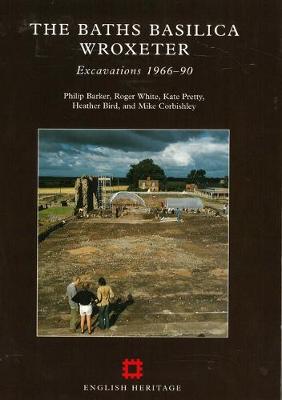English Heritage Archaeological Report
1 primary work
Book 8
The Baths Basilica Wroxeter
by Philip Barker, Roger White, Kate Pretty, Heather Bird, and Mike Corbishley
Published 15 July 2014
The excavations at Viroconium cornoviorum (Wroxeter), Shropshire, on the site of the baths basilica, built c 150 AD have provided seminal information of considerable importance for the study of the late and post-Roman periods in Britain. This is presented here in detail, with lavish illustrations including a large number of conjectural reconstructions of buildings and site panoramas, and 177 loose leaf plans. The final chapter considers the difficulty of dating late and sub-Roman sites, and locates the site within the broader framework of Roman and sub-Roman Britain. Considerable quantities of artefacts and environmental material were recovered, but only information related to the interpretation of the structures is presented here. The life of the baths basilica continued to the end of the fifth century. The site and neighbouring town blocks were then redeveloped with the construction of up to seventy timber buildings set on rubble and posthole foundations. Analysis of these buildings show that they were laid out using Roman modules. Chief among them, and occupying the centre of the site, was a massive winged house, apparently indicating the conversion of a former public space into a private demesne. Subsequently parts of the area seem to have again changed status with part of the east-west street taken over and occupied by market booths. Abandonment is indicated by a radiocarbon date of between 600 and 790 AD obtained from a single burial cut into the latest structures.
